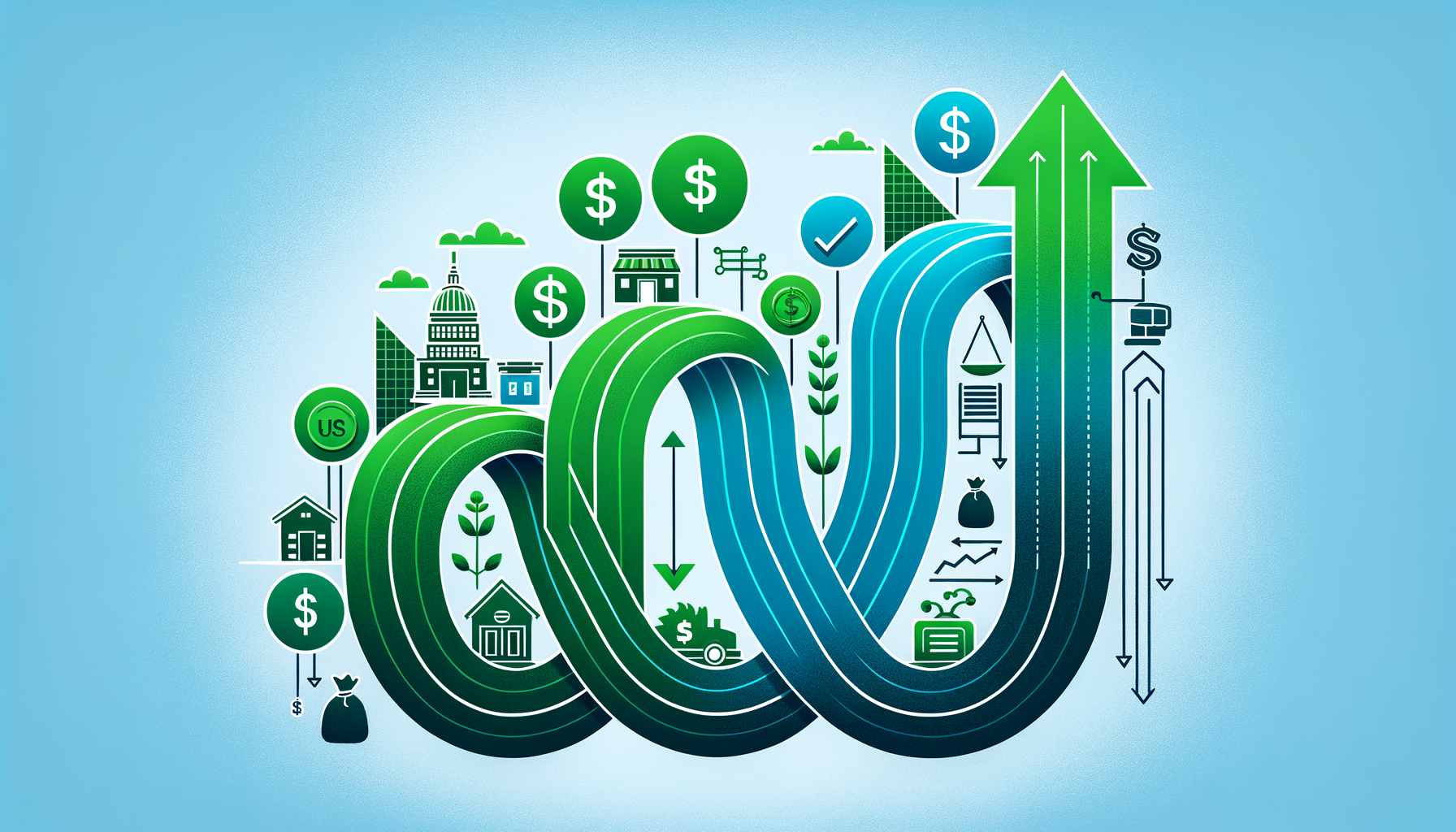“Rising Consumer Sentiment Amidst Dipping Inflation: Insights from the University of Michigan Survey”
Confidence in the economy amongst U.S. consumers is at an all-time high, according to recent data – a significant indicator for America’s retailers, manufacturers, and other business sectors. Despite the looming threat of inflation, the optimism is a promising sign for the economy, particularly on the consumer front.
The upbeat sentiments are presenting a bright outlook for the U.S. economy. It is an implication that the spending wheel will continue to spin faster, propelling growth further. Consumer spending is a major driver of the U.S. economy, and any upward deviation is a positive sign. This positive outlook is expected to drive successive growth and investment in diverse industries ranging from retail to real estate.
However, as always, there’s the other side of the coin that must be examined. Amidst the soaring consumer sentiment, the inflation outlook appears to be diving downwards. In other words, while consumers seem optimistic about the economy’s future, their perceptions surrounding inflation seem to be on a descent.
The downward outlook on inflation suggests that consumers are expecting a decline in inflation rates in the future. This could be connected to the federal reserve’s recent policy measures to tame inflation. However, this might also be a cause of concern as lower inflation expectations might indicate that consumers are pessimistic about future wage growth.
A closer look at these trends reveals complex layers of interconnected dynamics that shape and influence each other over time. This article delves deeper into the trends surrounding consumer sentiment and inflation outlook, and the potential implications they carry, painting a comprehensive picture of the economy’s future.
Understanding Consumer Sentiment
An upbeat consumer sentiment doesn’t just appear out of thin air. It is the result of various factors, including the current economic conditions, personal financial situations, and short-term and long-term national economic outlooks. Let’s break these down to understand how each aspect contributes to the burgeoning consumer sentiment.
The Current Economic Conditions:
The current economic conditions primarily revolve around the performance of the job market, household income and wealth, and the prices of goods and services. When faced with positive job growth, stable income and wealth, and affordable prices, consumers generally exhibit greater confidence in the economy. Over recent months, the U.S. has seen a sturdy job market with resilient wage growth, boosting consumer confidence.
Personal Financial Situations:
A consumer’s personal financial situation is undeniably a significant contributor to their sentiment. When individuals find themselves financially stable, with job security, manageable debt levels, and robust savings, their confidence in the economy strengthens. This is also linked to the consumer’s perception of the value for money – when consumers perceive that their hard-earned dollars can get them more, they feel financially secure, boosting their confidence further.
Short-Term and Long-Term National Economic Outlooks:
Every consumer’s perception of the national economy’s future is a crucial determinant of their sentiment. Prosperous economic outlooks are usually characterized by a promising job market, sound national financial management, and a stable political climate. When consumers perceive these positive aspects, their sentiment surges upwards.
Inflation Outlook – A Closer Look
While surging consumer sentiment signals a promising future, the falling inflation outlook necessitates an in-depth analysis. Here are some reasons why this downturn might actually not be as alarming as it seems at first glance.
Federal Intervention:
Given the persistent overheat of inflation, the central bank’s intervention was inevitable. The Federal Reserve is projected to make a series of policy-rate hikes – a tool often employed to reign in surging inflation. This aggressive stance against inflation can cause consumers to expect a decline in inflation rates, leading to a descend in the inflation outlook.
Healthy Economic Sign:
On a brighter note, a lower inflation outlook might not necessarily be a sign of doom and gloom. It could also indicate a maturing and healthy economy that is moving towards stability. When consumers expect inflation to decrease, they pivot their spending towards investments, hinting at economic advancement.
Potential Downsides:
Despite the above-mentioned positive aspects, a declining inflation outlook is not without its potential downside. It raises questions about the future wage growth. If consumers expect lower inflation rates, they might also expect lower wage growth. This expectation could tilt the balance, causing a slow down in consumer spending and potentially lead to economic stagnation.
To conclude, the most recent data presents an interesting interplay of consumer sentiment and inflation outlook. While the increased consumer sentiment is indeed a reason to celebrate, the inflation outlook dip calls for a level-headed analysis and conscientious interpretation. As we move forward, it’s crucial to continue monitoring these trends to gauge the economy’s health accurately and take corrective steps if necessary. Whether we see these as warning signals or signs of a maturing and stabilizing economy, only time will tell.

